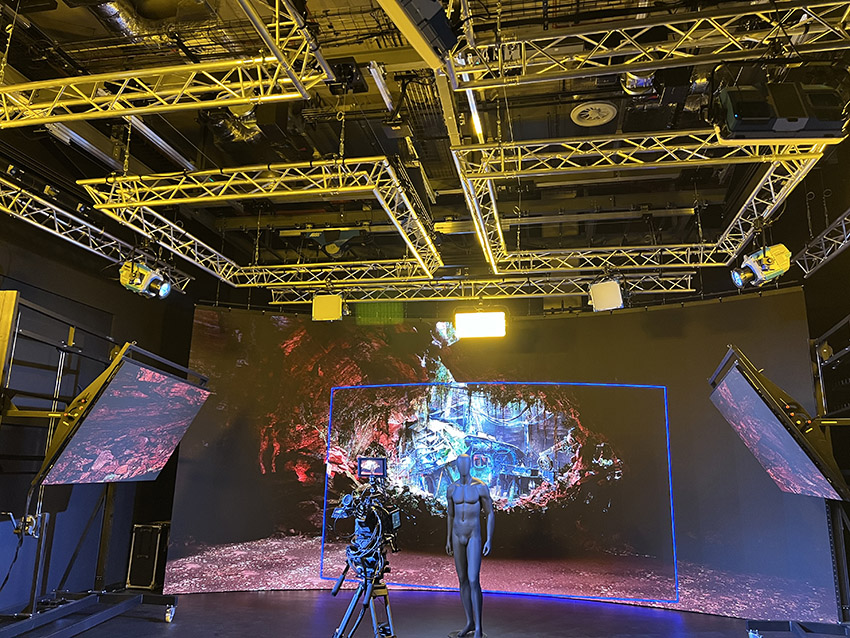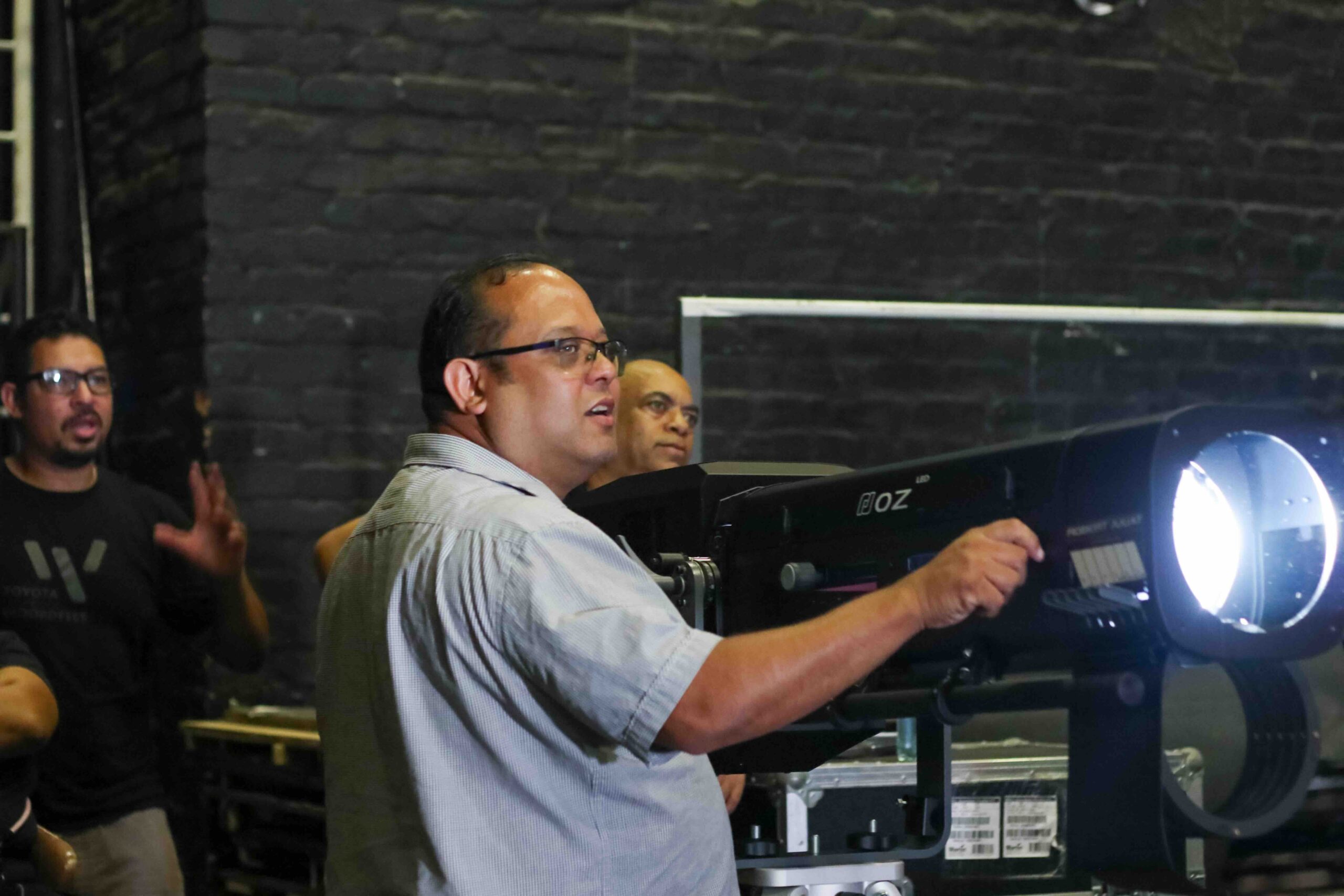JOHANNESBURG – Gearhouse South Africa was contracted by ceremonies producers VWV Group to deliver all technical aspects of the Closing Ceremony of the 2010 FIFA Soccer World Cup – including rigging, power, sound, lighting and large-format projection, which was contracted out to Ross Ashton of U.K.-based The Projection Studio and E/T/C Paris. The 30-minute show at Soccer City Stadium in Soweto happened just before the final match, where Spain won their first World Cup, beating Holland 1-0. The show reflected the energy of one of the most successful World Cup tournaments. It featured a cast of 740, including 40 "elephant operators," plus 35 well-known artists.

Gearhouse's Hugh Turner and Tim Dunn designed the light show using large format video projections on the field. Mark Ransom was technical production manager, and Mik Auckland, David Proctor, David Zolkwer and Adrian Bourke from Jack Morton Worldwide supported the event as consultants.
The load in for the closing ceremony began as soon as the opening match had been played, with all site/technical logistics and crew co-ordination handled by project managers Eyal Yehezkely and Bonni Meyer. Bill Lawford organized the arrival of eight containers of equipment by sea freight and another 50 tonnes by air freight.
Meyer took care of the logistics, crewing and administration, which included the management of up to 140 crew on site at peak times including local crew members.
Yehezkely looked after the technical operation, which included deciding where to position two projection and four followspot platforms. These structures, built by Gearhouse Structures and In2Structures, were custom-designed by Tim Dunn and approved by the stadium's structural engineers to be flown from the roof above the venue's upper concourse, using 16 2-tonne motors for the spot platforms and 10 2-tonne motors for the projection platforms.

The lighting was designed and specified by Hugh Turner and Tim Dunn, with Dunn also programming and operating the show. As with all stadium shows, it was a case of creating lots of big, bold, epic looks and statements – "think big, light big" – using 468 of the most powerful moving lights available.
At the same time, the lighting had to be balanced so the proceedings would look good on camera as well as for the 94,000 capacity audience at Soccer City – while also not interfering with the large-format projections on the field.
The lights were positioned around the stadium on four rings – Ring Four being the highest, flown on trusses at 50 meters high just below roof level, with Rings Three, Two and One descending down the stadium to another ring around the perimeter of the field of play.
Hanging lights on the lower rings involved the fabrication of special brackets to be attached to stadium structural elements. Ring Four lights were rigged on 12 trussing sections flown on 36 1-tonne CM chain hoists with long chains. Gearhouse Rigging undertook all the rigging involved in the show, which was coordinated by Kendall Dixon.

Gearhouse invested heavily in Panther 2K and 5K searchlights and Vari*Lites for this gig. The 120 Vari*Lites were bought via South African distributor DWR and is the biggest sale of Vari*Lites in South Africa to date. Vari-Lite 3000s, 3500s and VLXs were used on this show, along with Robe ColorSpot and ColorWash 2500E ATs and Robe REDWash 3â—Â192 LED wash lights.
Eight followspots – Gladiators and Super Troupers made by Strong Entertainment Lighting – were deployed around the stadium on the four flown platforms.
Dunn chose an MA Lighting grandMA system for control, which included three active grandMA consoles used for programming with a fourth used as a technical desk on the field during programming.
The lighting fixtures consumed a total of 30 DMX universes plus 10 spares. Chris Grandin from Gearhouse Media designed the lighting data control network. It used 4 Km of fiber optic cable, which was looped back on itself all the way around the stadium to provide live backup.
A considerable amount of work went into programming the show. Dunn & Turner spent a week before the get in pre-programming the show's basic building blocks on the MA Visualiser, after importing a detailed re-drawn schematic of the stadium architecture and structures into the system. They then spent seven overnight sessions in the stadium building the show and recording it on the grandMA, which contained hundreds of complex cues.

Ross Ashton E/T/C Paris supplied all the hardware and control solutions for the field projections, the first time monumental projection has been used in South Africa. Patrice Bouqueniaux led the E/T/C Paris team.
The 55-square-meter projections in the middle of the field-of-play were delivered by 18 Christie 18K Roadster projectors mounted on the two platforms flown along the east and west (long) sides of Soccer City. The projectors were configured in 16:9 format and rigged in six stacks of three, covering the field using a total of six areas.
The show's video content was produced by VWV, which worked with Johannesburg-based Ministry of Illusion on the graphic scenes. Each projector received its own video feed and keystone correction to eliminate discrepancies between their optical centers.
E/T/C's own OnlyView PC-based system was used for control, programmed and operated by Yan Kaimakis. This used 18 active OnlyView servers, one per machine with another 18 as hot backups, and data was distributed via a doubled up network system devised by Gearhouse's Chris Grandin and Dave Black.
Footage for the stadium LED screens was also output via the OnlyView system, with a field projection feed sent to the host broadcaster.

All production elements of the closing ceremony were run off generated power, supplied and distributed around the stadium by Gearhouse Power. Some 12 kilometers of mains cable weighing about 55 tonnes was shipped to South Africa by The Power Shop from Belgium in two 40-foot containers.
Gearhouse Power's Anthony Sackstein and his assistant Fodo Mathe spent five days walking the venue and calculating how to get sufficient power to all the places it was needed … and then applied some serious lateral thinking to deal with balancing the voltage over some very long cable runs.
The venue was divided into three sections Roof East, Roof West and Field of Play, and then another four quadrants. At each of the four roof and lighting ring positions, they delivered a 400A supply broken into a 400A and 125 Amp distro. Behind each screen (north and south) were 250 Amp to each point, and another two 125A feeds where installed to feed projector and followspot platforms.
Four 400A feeds were run to the Field of Play for all the 5K Panthers, with four 48-way hot power distros feeding all the single phase moving lights (Robes and Vari*Lites).
Barloworld Power Systems in Johannesburg supplied eight generators to Gearhouse Power. Corrie Du Plooy managed the project with John Stander and Louie Pieterse on 24-hour standby. The generators were located outside the stadium in the technical compound, making the shortest bulk power run of 1500A 220m and the longest secondary run of 400A only 500 meters from the source.
Two sets of 3 x 1000 KVA sets were synchronized to supply a backed-up feed of 1500 Amps per phase. The first of these two sets fed the lighting rings in the roof, the second set fed lighting and audio on the Field of Play. The last set of two synchronized generators fed the west side, with one of the longest cable runs of the installation at 500 meters. Ian Holmes and Ronnie Malaatjie served as the Gearhouse Power crew chiefs.
The show – designed and produced by VWV Group – included a blend of contemporary African music, dance and theatre, including a family of 13 elephants (life-sized puppets) and a performance by Shakira of her 2010 World Cup theme song, "Waka Waka."
For more information, please visit www.gearhouse.co.za.



